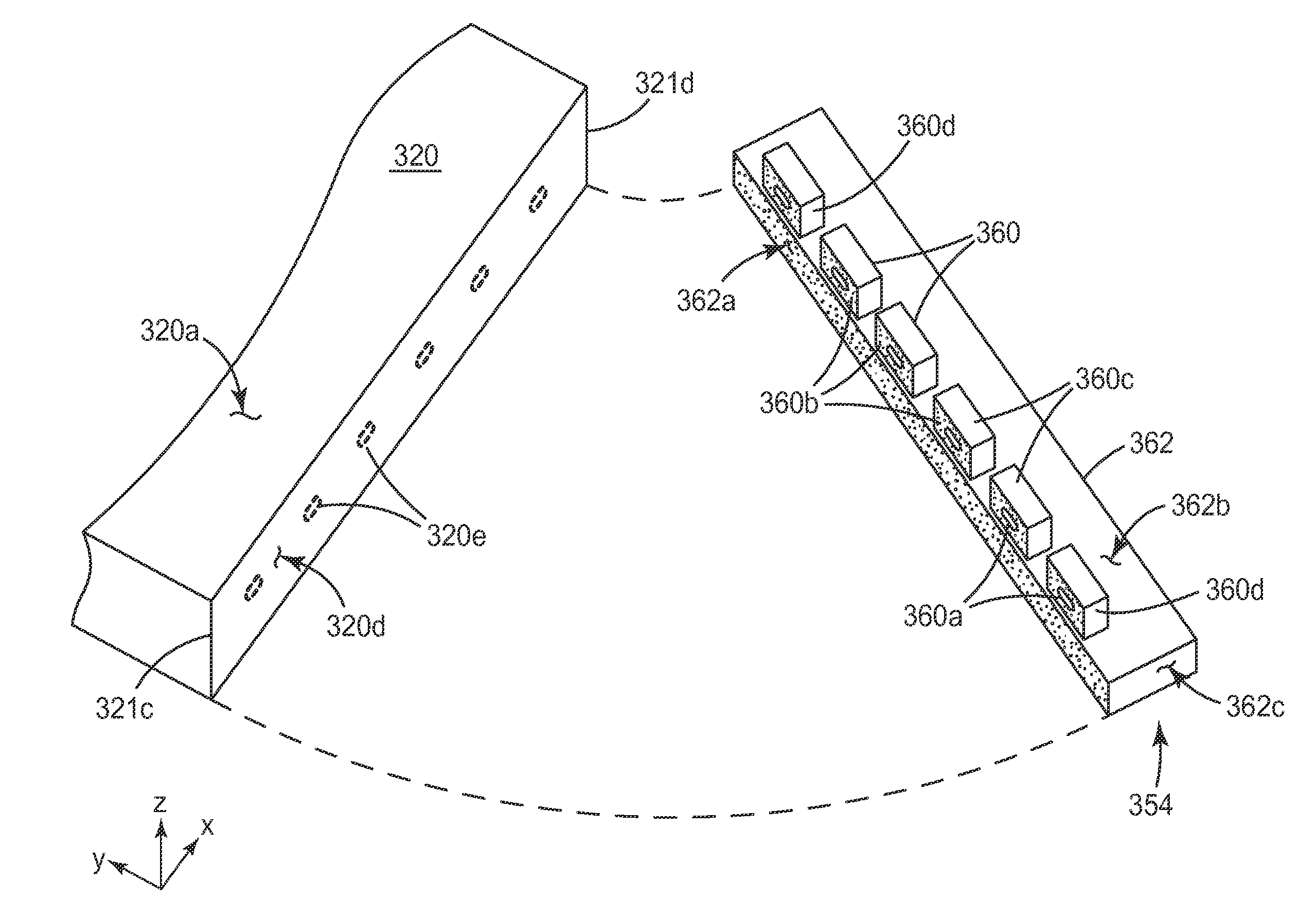Directional backlight with reduced crosstalk
a crosstalk reduction and backlight technology, applied in the field of backlight displays, can solve the problems of reducing the 3d image quality, and achieve the effects of low crosstalk, high luminance, and easy manufacturing and assembly
- Summary
- Abstract
- Description
- Claims
- Application Information
AI Technical Summary
Benefits of technology
Problems solved by technology
Method used
Image
Examples
Embodiment Construction
[0030]As outlined above, we describe herein, among other things, techniques that reduce light reflection from the far end of a light guide—i.e., the end of the light guide farthest from the light source assembly being energized—in a backlight suitable for use in an autostereoscopic display. The techniques can reduce visual crosstalk between left and right images, resulting in an improved autostereoscopic 3D viewing experience.
[0031]In some cases, the techniques utilize only a simple flat surface for each end of the light guide, and also use material(s) that strongly absorb visible light and that are spaced apart from, but typically in relatively close proximity to, the light guide in order to reduce or minimize the amount of light reflected back into the light guide, thus reducing crosstalk. The absorptive material, which typically would have a black appearance due to strong absorption over at least visible wavelengths, may be applied e.g. in a thin or thick film to surfaces of exis...
PUM
 Login to View More
Login to View More Abstract
Description
Claims
Application Information
 Login to View More
Login to View More - R&D
- Intellectual Property
- Life Sciences
- Materials
- Tech Scout
- Unparalleled Data Quality
- Higher Quality Content
- 60% Fewer Hallucinations
Browse by: Latest US Patents, China's latest patents, Technical Efficacy Thesaurus, Application Domain, Technology Topic, Popular Technical Reports.
© 2025 PatSnap. All rights reserved.Legal|Privacy policy|Modern Slavery Act Transparency Statement|Sitemap|About US| Contact US: help@patsnap.com



